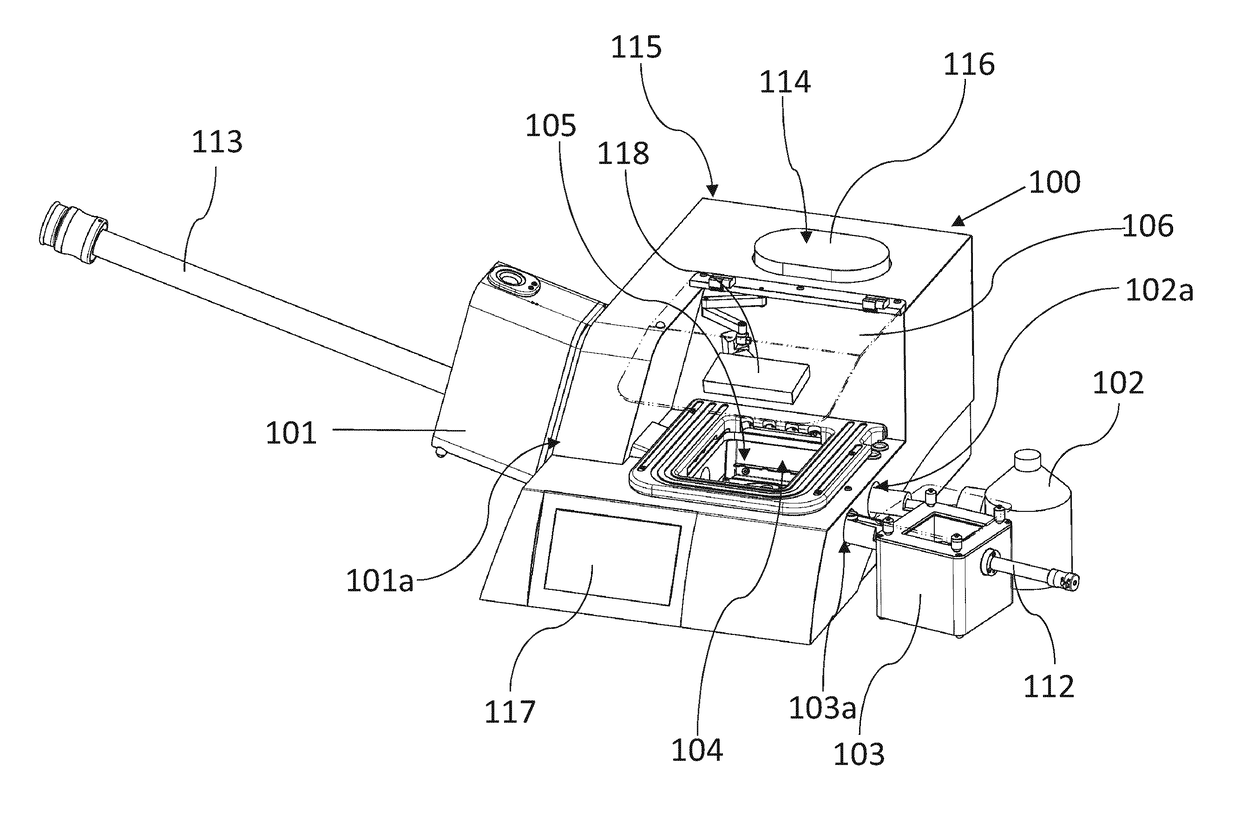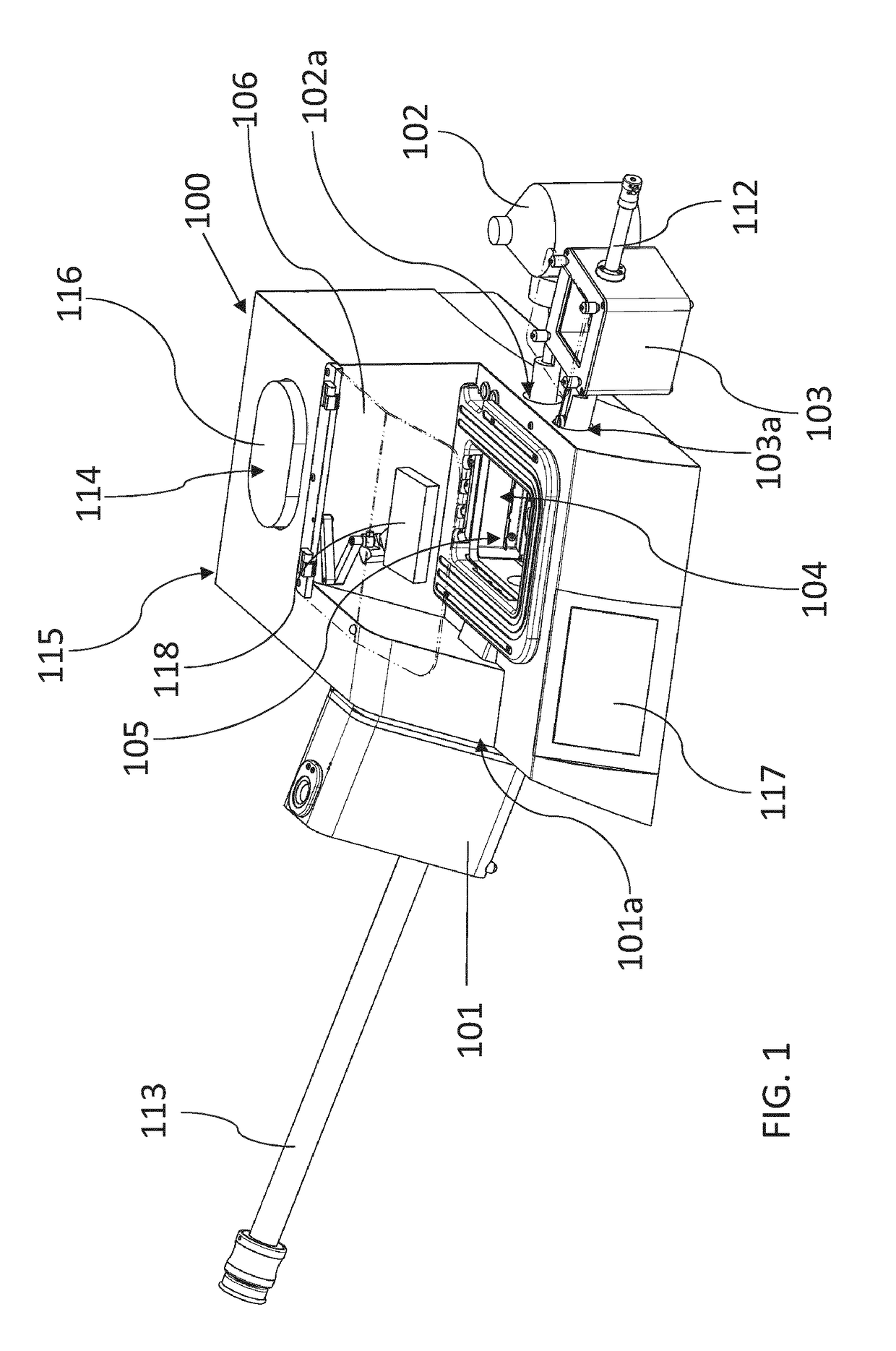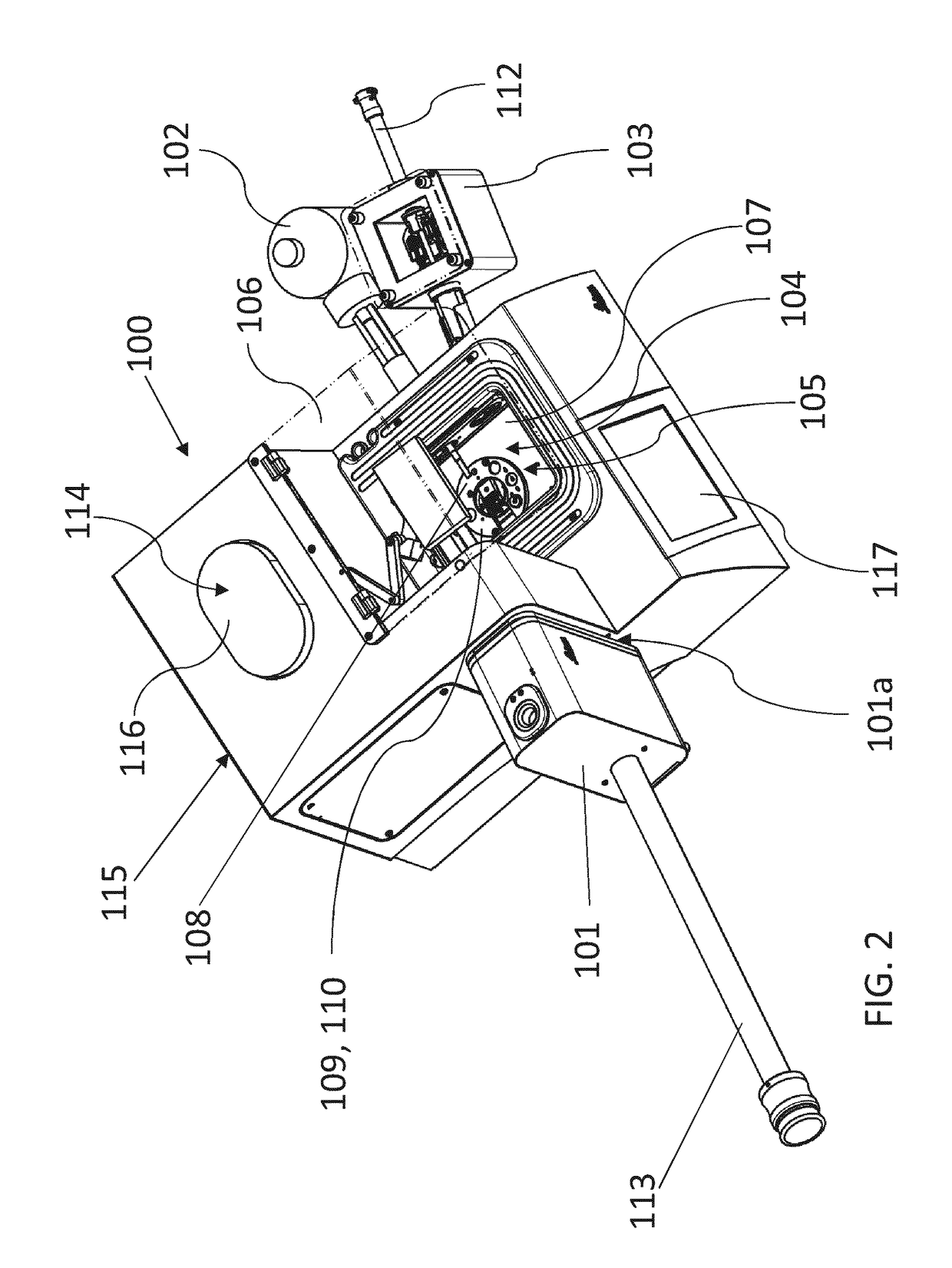Loading station for transferring frozen samples at low temperatures
a technology for loading stations and frozen samples, applied in the direction of microscopes, instruments, electric discharge tubes, etc., can solve the problems of not only requiring a considerable amount of time, but also unable to transfer samples from one sample holder into a different configuration sample holder for a different application
- Summary
- Abstract
- Description
- Claims
- Application Information
AI Technical Summary
Benefits of technology
Problems solved by technology
Method used
Image
Examples
Embodiment Construction
[0034]FIG. 1 and FIG. 2 are perspective views of a loading station 100 in accordance with the invention. Loading station 100 encompasses a chamber 104, cooled with coolant (in the example, liquid nitrogen (LN2)), which is open toward the top. In the example shown, chamber 104 is embedded into a housing 115. Chamber 104 is filled at least partly with LN2. Continuous evaporation of the coolant results in formation of a flow of cold gas that emerges from chamber 104 and thereby prevents the entry of air. A breath shield 106 is positioned above open region 105 of chamber 104. The breath shield prevents water vapor from freezing in or on the chamber. The emerging flow of cold gas, and the breath shield, thus prevent contamination of the samples. The loading station furthermore possesses a magnifying lens (loupe) 118 that is positioned above chamber 104 and below breath shield 106.
[0035]The samples are very small frozen samples for electron microscopy, which are transferred into and out o...
PUM
| Property | Measurement | Unit |
|---|---|---|
| temperature | aaaaa | aaaaa |
| temperatures | aaaaa | aaaaa |
| electron microscopy | aaaaa | aaaaa |
Abstract
Description
Claims
Application Information
 Login to View More
Login to View More - R&D
- Intellectual Property
- Life Sciences
- Materials
- Tech Scout
- Unparalleled Data Quality
- Higher Quality Content
- 60% Fewer Hallucinations
Browse by: Latest US Patents, China's latest patents, Technical Efficacy Thesaurus, Application Domain, Technology Topic, Popular Technical Reports.
© 2025 PatSnap. All rights reserved.Legal|Privacy policy|Modern Slavery Act Transparency Statement|Sitemap|About US| Contact US: help@patsnap.com



